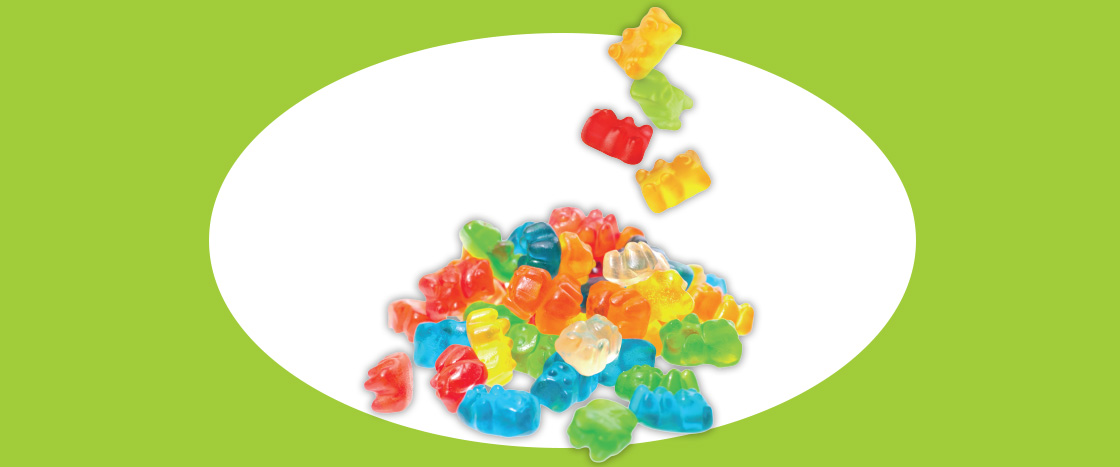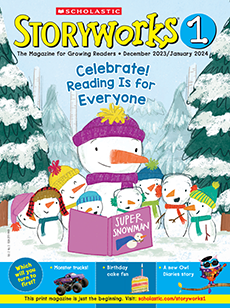Gummy bears come in different colors. Sometimes the flavor does not match the color. A clear gummy bear can be pineapple. A green one can be strawberry.

The Real Gummy Bears
Gummy bears have been around for more than 100 years. What do you know about this sweet treat?
Learning Objective: Children will compare fiction and nonfiction texts about gummy bears.
Yummy Gummies
Gummy Mania
Over the years, gummy bears have been very popular. There was once a cartoon about gummy bears. Now there are toys that look like gummies.
More Gummies
Gummy bears are not the only gummy candy. Have you seen gummy worms? Look at that gummy hamburger. What a funny gummy!
Brush Away the Gummies
Gummies are yummy. But they have a lot of sugar in them. If sugar stays on your teeth too long, you can get a cavity. So brush your teeth if you eat a gummy. That gets the sugar off!
More About the Article
English Language Arts Focus
Fiction/nonfiction
Social Studies Focus
History and culture
Implementation
- Whole group
Pairings and Text Connections
- In this issue: "You Can’t Catch Me, I’m the Gummy Bear!"
- From the Storyworks 1 archive: "Mini History: The True Story of Popsicles" (December 2022/January 2023); "Alike and Different: The Truth Behind Chocolate and Vanilla" (February 2023)
Before-Reading Resources
- Vocabulary slideshow (5 minutes) flavor, popular
- Video: Fiction and Nonfiction (5 minutes) Learn about what you might find in fiction and nonfiction texts.
Suggested Reading Focus
Comparing fiction and nonfiction (20 minutes)
- Before reading this article, talk about the difference between fiction and nonfiction. Say that fiction—like “You Can’t Catch Me, I’m the Gummy Bear”—is made-up. It is not true. Ask students for ways they know that the story was fiction. (The gummy bear talks and runs. The story is illustrated.) Then tell students that they will read a nonfiction article about gummy bears. Ask students what they will likely see and read in a nonfiction article (true facts and information; photographs).
- Read the article aloud while students follow along in their magazines. Then read the article again with student volunteers for each section.
- When you finish, ask students how “You Can’t Catch Me, I’m the Gummy Bear” and “The Real Gummy Bears” are similar and different. Which did they prefer? Why?
After-Reading Skills Practice
